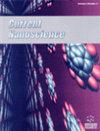Optimization of Lead-Free Cs2TiBr6 Green Perovskite Solar Cell for Future Renewable Energy Applications
IF 1.5
4区 材料科学
Q4 BIOTECHNOLOGY & APPLIED MICROBIOLOGY
引用次数: 0
Abstract
Introduction: A modern genre of solar technology is Perovskite solar cells (PSCs), which are growing rapidly because they work well. The composition of links within the hole transport materials, electron transport materials and the footprint on PSCs is perovskite Method: The traditional genre of lead halide perovskite can be swapped with a new perovskite compound called Cs2TiBr6. Cs2TiBr6 has better properties when it comes to light, electricity, and solar energy. When comparing the performance of various electron transport films (ETFs) for the effective operation of perovskite, TiO2 is recognized as an ETF as it has higher thermal stability, low-cost, and appropriate energy level Results: The most productive hole transport film (HTF) for these perovskite solar cells, compared to other HTFs, has been demonstrated as V2O5. Conclusion: The various solar cell characteristics of the proposed device, the "Au/V2O5/Cs2TiBr6/TiO2/TCO" perovskite solar cell, are investigated in this examination by tuning the parameters such as temperature, series resistance, defect density, etc.为未来可再生能源应用优化无铅 Cs2TiBr6 绿色过氧化物太阳能电池
导言:现代太阳能技术的一种类型是过氧化物太阳能电池(PSCs),这种电池因其工作性能良好而发展迅速。在 PSC 上,空穴传输材料、电子传输材料和基底的组成环节都采用了包晶法:一种名为 Cs2TiBr6 的新型过氧化物化合物可以取代传统的卤化铅过氧化物。Cs2TiBr6 在光、电和太阳能方面具有更好的性能。在比较各种电子传输薄膜(ETFs)的性能,以确保透辉石的有效运行时,TiO2 被认为是一种 ETF,因为它具有更高的热稳定性、低成本和适当的能级结果:与其他 HTF 相比,V2O5 被证明是这些透辉石太阳能电池中最有效的空穴传输薄膜 (HTF)。结论本研究通过调整温度、串联电阻、缺陷密度等参数,研究了所提出的 "Au/V2O5/Cs2TiBr6/TiO2/TCO "透辉石太阳能电池器件的各种太阳能电池特性。
本文章由计算机程序翻译,如有差异,请以英文原文为准。
求助全文
约1分钟内获得全文
求助全文
来源期刊

Current Nanoscience
工程技术-材料科学:综合
CiteScore
3.50
自引率
6.70%
发文量
83
审稿时长
4.4 months
期刊介绍:
Current Nanoscience publishes (a) Authoritative/Mini Reviews, and (b) Original Research and Highlights written by experts covering the most recent advances in nanoscience and nanotechnology. All aspects of the field are represented including nano-structures, nano-bubbles, nano-droplets and nanofluids. Applications of nanoscience in physics, material science, chemistry, synthesis, environmental science, electronics, biomedical nanotechnology, biomedical engineering, biotechnology, medicine and pharmaceuticals are also covered. The journal is essential to all researches involved in nanoscience and its applied and fundamental areas of science, chemistry, physics, material science, engineering and medicine.
Current Nanoscience also welcomes submissions on the following topics of Nanoscience and Nanotechnology:
Nanoelectronics and photonics
Advanced Nanomaterials
Nanofabrication and measurement
Nanobiotechnology and nanomedicine
Nanotechnology for energy
Sensors and actuator
Computational nanoscience and technology.
 求助内容:
求助内容: 应助结果提醒方式:
应助结果提醒方式:


